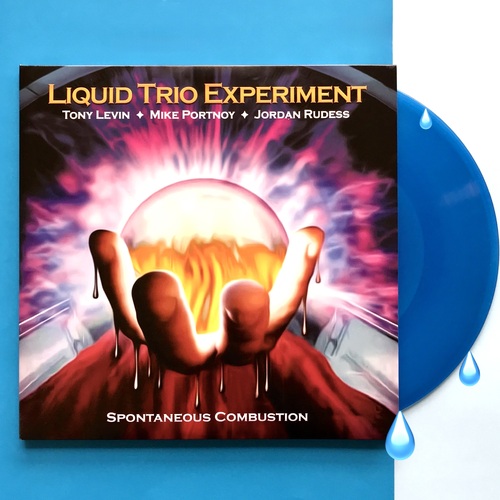SPONTANEOUS PROG
Author: BRUCE JENKINS Date Posted:21 March 2025

Rock Supergroups have a certain aura. Restless atoms from various molecules break free and coalesce into a new, bright element that we crane our ears to hear. In the progressive rock arena the first such group was Emerson, Lake & Palmer. Keyboard virtuoso Keith Emerson came from The Nice, Greg Lake brought his powerful vocal chords (and acoustic guitar) from King Crimson and hot young drummer Carl Palmer exited Atomic Rooster. Together they combined classical influences, jazz elements and of course rock energy into a highly successful sound that made them giants of the genre. This groundbreaking trio formed in 1970 and was far from the last such coalition.
Later in the Seventies a stellar collection of prog musicians—including John Wetton (King Crimson) Bill Bruford (Yes, KC) and Eddie Jobson (Roxy Music, Frank Zappa)—formed U.K., a progressive band with strong jazz-rock elements who made three well-regarded albums. Into the Eighties and Asia stormed the charts with a prog-influenced radio friendly rock. The personnel included serial supergrouper John Wetton, Yes guitarist Steve Howe and Carl Palmer; it is obvious how close a community the progressive rock scene was!
The genre kept progressing, including heavier outfits often labelled Prog-Metal. A major player in this field was American group Dream Theatre, who formed in the mid-80s. Members of this highly successful band continued the prog tradition of seeking new amalgams of musicians, with the primary example being Transatlantic, a prog supergroup formed in the late Nineties. Less well known is the group formed by Dream Theatre alumni drummer Mike Portnoy, keyboard player Jordan Rudess, and guitarist John Petrucci. A quartet was created by the addition of prog-rock icon Tony Levin and Liquid Tension Experiment was born.
In late 1998, Liquid Tension Experiment were working on their second studio album. Things were buzzing until the quartet was unexpectedly reduced to a trio when John Petrucci’s wife went into labou. He exited stage right, towards the Maternity Ward. The remaining players were enjoying a creative surge, however, and continued recording as a trio. Some of these pieces became songs on the second album, but others found release as a supergroup side project: Spontaneous Combustion by the cleverly re-named Liquid Trio Experiment.
Spontaneous Combustion—the title reflecting the improvised nature of the music—was released on CD by the Magna Carta label in 2007, with a welcome vinyl version appearing, belatedly, in 2022. It is a delightful album, with exemplary playing by these super musicians. Being keyboard heavy, there are many and varied textures and 'feels' to the pieces. "Chris & Kevin’s Bogus Journey" opens proceedings with a jerky, off-kilter shuffle; a kind of engine-revving introduction to what follows. Second track, "Hot Rod" does indeed burn up the street, throwing in some screaming swerves and u-turns along the way. Another outstanding track is the brooding cinematic ambience of "Fire Dance" which includes a lovely piano coda.
This is certainly not a Dream Theatre album but nor should it be dismissed. It's just different. The trio are improvising and doing it with flair. Yes, it is experimental at times as they search for a line to follow, but often the grooves are both deep and satisfying. Fans of Levin, in particular, will love hearing him front-of-stage. Like many jam/impro recordings, the joy is in following the winding paths of the players and being willing to wander with them. Titles like "Chris & Kevin's Bogus Journey" (a nod to the second Bill and Ted film) and "Jazz Odyssey" (Spinal Tap's disastrous live impro performance) suggest that the players are not considering this a mainstream/core release, and neither should we. But if you like the idea of a prog rock Necks album or some very skilled instrumental jamming, you will enjoy this. Just remember what it is, and you won’t spontaneously combust.
© Bruce Jenkins—March 2025


